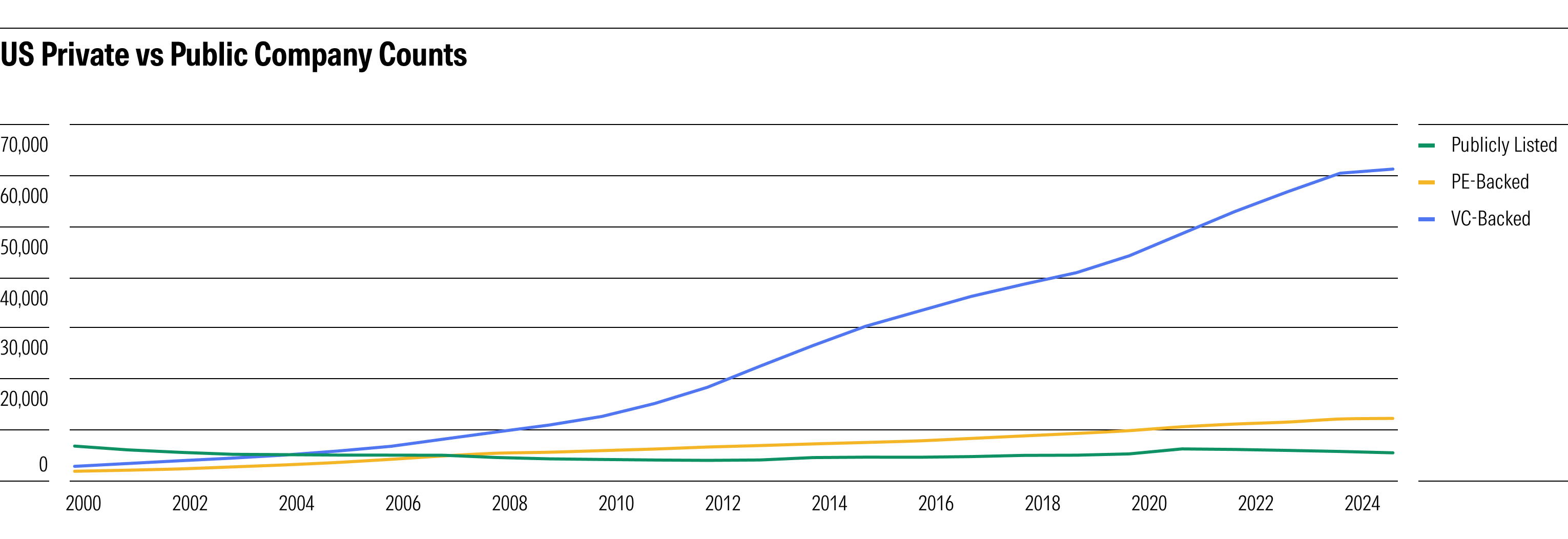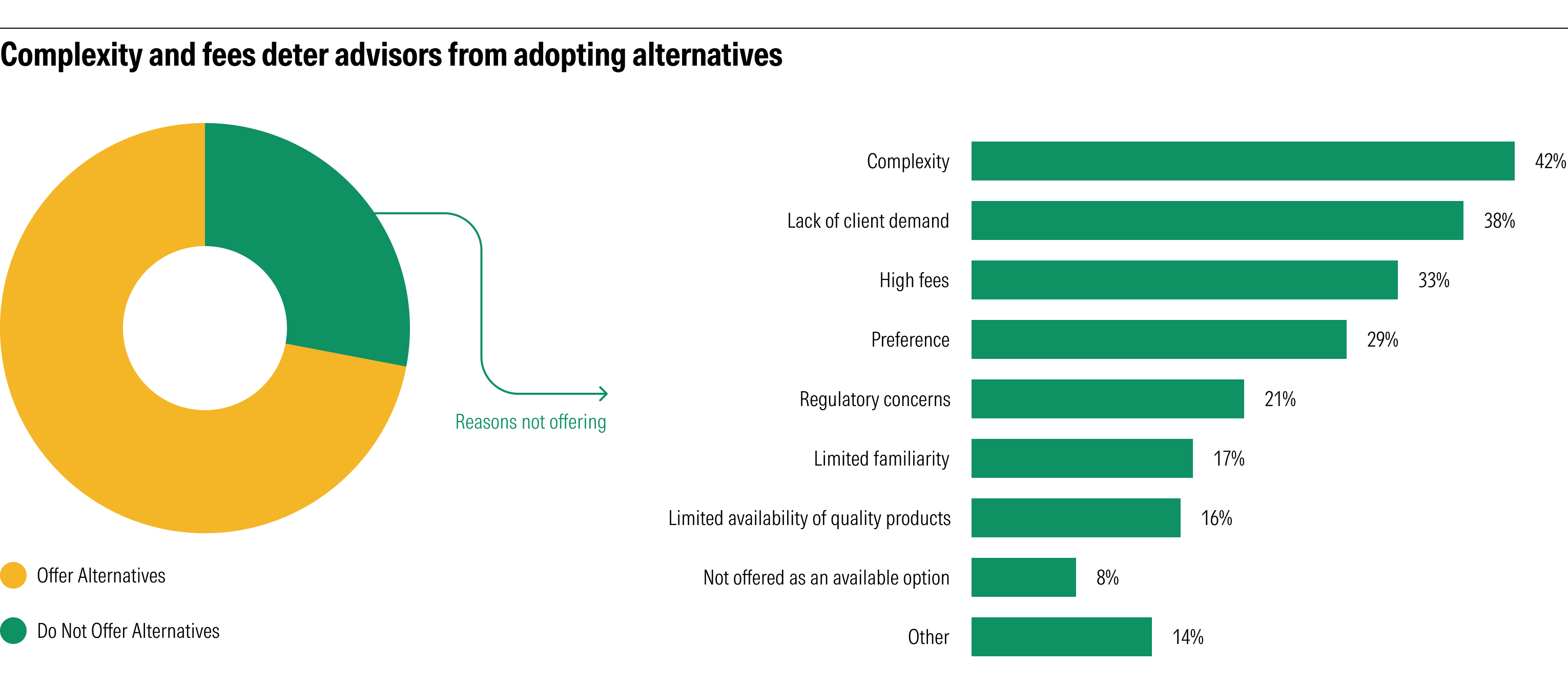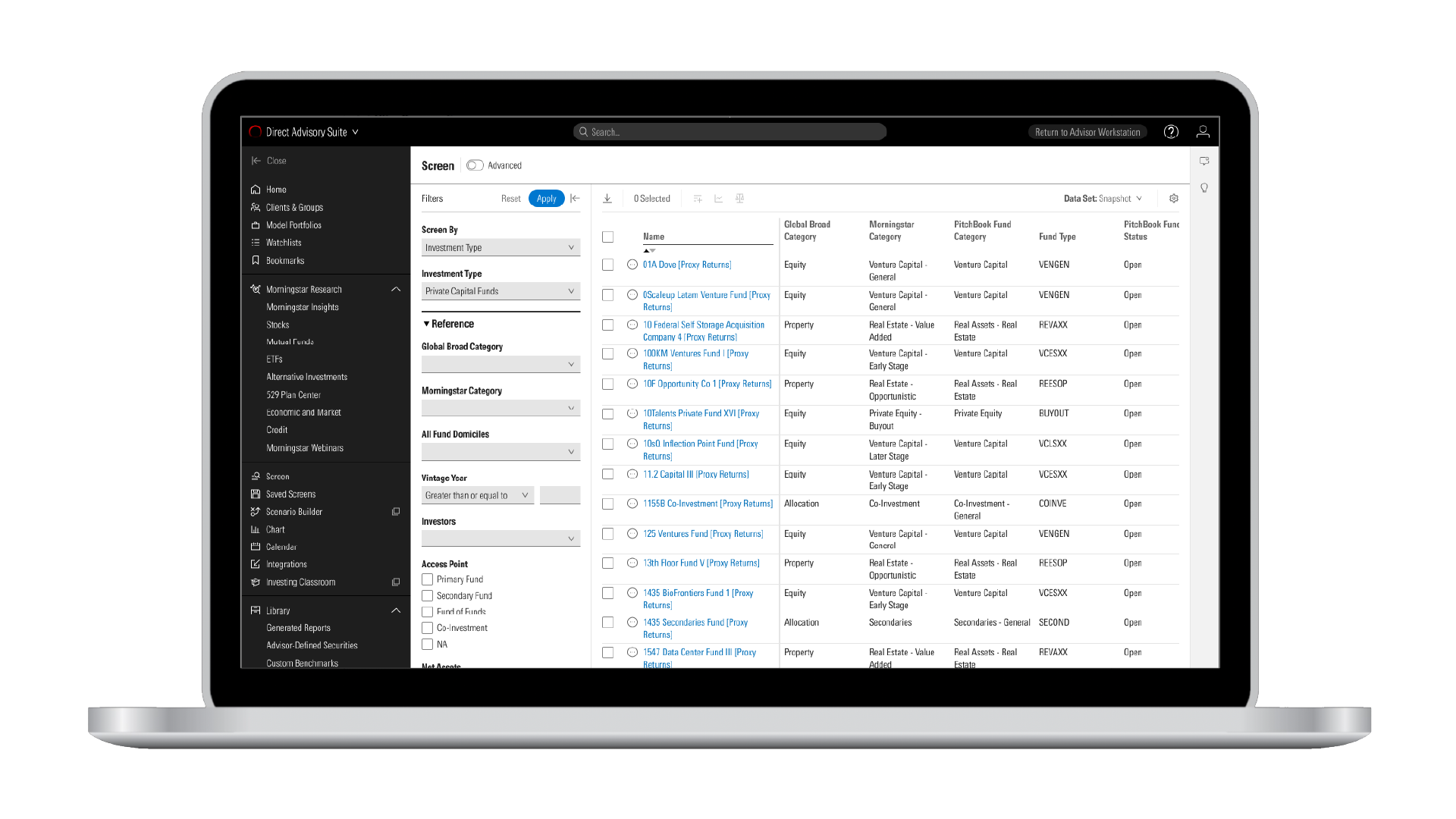5 min read
Evolving Portfolio Analytics for Today's Market

Over the past decade, regulatory changes and a search for new investment dollars have pushed more private market investment options into the mainstream—and some portfolios into uncharted territory. Traditional risk models, which are premised on the transparency of public markets, are not sufficient to estimate the volatility of a portfolio that includes both public and private investments. And while volatility metrics are typically extended through scenario modeling and forward-looking analytics, these tools also must be reviewed and refined to capture the uncertainty associated with the convergence of public and private markets. This is essential for a comprehensive risk assessment, enabling advisors and their clients to navigate the complexities of blended public and private market portfolios.
The New Risk Realities
When we talk about risk in today’s market, it’s no longer just about how prices move. Volatility still matters, but it’s only part of the story. As more portfolios include private and semi-private investments, other types of risk are moving into the spotlight—and they’re not always easy to measure with traditional tools.

Source: PitchBook and World Bank Data. Data as of Mar. 31, 2025
Liquidity is a big one. Products like interval funds, which have been around for decades, are suddenly taking off as a vehicle of choice to broaden access to private debt investments especially. Interval funds appear to offer flexible access, promising things like quarterly redemption windows. But dig into the fine print, and you’ll often discover restrictions that limit investor accessibility to sell out of their positions. These details can catch clients off guard, especially in times of market stress. That’s why advisors need to understand not just what the product promises, but how it actually behaves when liquidity is tight.
Valuation is another growing challenge. In public markets, you can usually count on consistent pricing data. But private assets don’t follow the same playbook. Pricing updates can be infrequent, methodologies vary, and data points can be patchy. Advisors often have to rely on custom reports or point-in-time performance snapshots—making it much harder to forecast with confidence.
Compounding this is the difference in how private capital funds report performance, often using internal rate of return (IRR) instead of standard return metrics. This can make it difficult to compare private assets to public market investments and hinders unified risk analysis across portfolio segments.
Then there’s transparency—or sometimes, the lack of it. Disclosure standards differ from one private vehicle to the next, which makes it tough to line up investments side-by-side and draw clear comparisons. Advisors often find themselves stitching together incomplete or inconsistent information, which adds another layer of complexity to building a clear risk profile.

Source: Voice of the Advisor. Q21. Why do you not employ alternative investments as an option for the clients in your practice? Please select up to your top three reasons.
To help address some of these challenges, Morningstar has been developing tools that aim to bring more clarity to the picture. By incorporating factors such as redemption structures, gating histories, and liquidity event patterns, and leaning on proxy index data to estimate returns and volatility, our emerging tools and frameworks aim to create a more structured and meaningful way to compare and evaluate performance trends as well as volatility and liquidity risks across hybrid portfolios.
Making the Invisible Visible
Traditional stress tests just weren’t built for private markets. They assume things like continuous pricing and readily available historical data; conditions that often don’t exist when you’re dealing with alternatives. These models tend to look in the rearview mirror—but for many private investments, the data isn’t there to support that kind of backward-looking analysis.
In practice, asset managers and advisors are left piecing together risk profiles from a patchwork of sources—PDFs, manager commentaries, sparse fact sheets. The information is often inconsistent, hard to parse, and sometimes incomplete. Such fragmentation makes it tough to surface meaningful insights or spot emerging risks early.
The first step to better illuminate private-asset investments is covering the marketplace of funds that invest in private equity, credit, real estate and infrastructure. Morningstar is bringing together expanded coverage across vehicles and asset classes from private equity and venture capital to private credit and semi-liquid funds, providing advisors data and analytics on approximately 1,000 private capital funds, 300 interval funds, and 80 tender offer funds in Direct Advisory Suite.
For many of these vehicles, however, it’s a case of “the more you see, the less you know.” Filing requirements vary for these funds, and holdings may be unknown, difficult to identify consistently, and lack valuation certainty given that they are not publicly traded. Morningstar is further helping address these persistent data gaps by applying fund categorization and proxy-based modeling and scenario tools. These efforts aim to simulate risk and return where direct data is missing, especially for less transparent or newer vehicles.
New Analytics for Public-Private Portfolios
One way the industry is making progress is by improving how these investments are classified. For instance, fund taxonomies like the one developed by PitchBook can help bring order to the chaos by grouping funds into more consistent, comparable categories. While this doesn’t provide the granularity offered by detailed fund-level holdings, it does offer a starting point—giving advisors a clearer view of what they’re working with and enabling more relevant peer comparisons.
Morningstar is extending our fund categorization system by incorporating PitchBook private capital fund categories and adding new interval fund categories to better identify and group managed investments that hold private assets. Using this enhanced category system, we’ve developed a top-down Portfolio Composition framework to bring alternative exposures into sharper focus for advisors and their clients. Rather than attempting to roll up granular holdings data—which can be spotty to non-existent and difficult to parse within private-asset funds—this new analytical view breaks the portfolio down by fund category to help advisors identify where alternative strategies are embedded in client portfolios, supporting clearer communication and more deliberate portfolio construction aligned to client objectives.
In addition our new “% private” data point reveals the level of private market exposure in a fund or client account by rolling up all assets invested in private-capital funds as well as identifying at the holding level (when available) the percentage of assets invested in individual private equities, private real estate investments, and non-bank loans using Morningstar’s detailed holdings-type identifiers.


Source: Morningstar Direct. Data as of the latest reported portfolio in July 2025.
Private capital fund categories can also support performance and risk analysis via the creation of benchmarks. When traditional data, like daily net asset values, isn’t available for a fund, these proxies are the next best option, helping to shed light on parts of the market that would otherwise remain opaque.
Proxy-based models are also useful when evaluating private-capital funds for which investors may only have internal rate of return data. Case in point, Morningstar’s new Proxy Returns for private capital funds use PitchBook category index data calibrated by an individual fund’s internal rate of return and life-cycle stage to estimate trailing returns that are comparable to those of mutual funds and ETFs.
If they're clearly labeled and transparently disclosed, Proxy Returns can provide educated approximations where there would otherwise be a data void—supporting more informed decision-making in areas like performance and risk management. On the latter point, Morningstar has also leveraged PitchBook indexes to expand our Risk Model and Portfolio Risk Score to include private-capital, interval, and tender-offer funds, providing a common language for risk encapsulating public and private market investments in one portfolio.
The Portfolio Risk Score also now includes breakdowns of a portfolio’s “% Risk from Volatility” and “% Risk from Liquidity,” the latter of which we infer from adjusted private capital Proxy Return data for private capital funds and based on repurchase limitations, redemption terms and frequencies, and lock-up periods for individual interval, tender offer, and hedge funds. This metric can help investors and advisors approximate how much liquidity risk they’re adding by venturing into semiliquid or private capital funds.

Source: Morningstar Direct Advisory Suite. Data as of the latest reported portfolio in July 2025.
Education Is Half the Battle
Data is only as useful as our ability to explain it. And while accredited investors meet certain wealth or income thresholds, that doesn’t always mean they fully understand the intricacies of what they’re investing in—especially when it comes to private markets.
That disconnect can create its own kind of risk. When clients assume they understand something—or worse, when we assume they do—misalignment can creep in. And in complex portfolios, that gap between expectation and reality can lead to surprises no one wants.
This is where advisors play a critical role. Beyond portfolio management, you’re also translators—taking technical, often abstract risk metrics and turning them into conversations that make sense to clients. It’s about helping people feel informed, not overwhelmed.
The good news is that the right tools can make this easier. Frameworks that organize complexity—breaking down things like liquidity structures or risk exposure into plain, actionable insights—can support better discussions and stronger relationships.
Ultimately, it's about creating alignment between what clients think they’re getting and what their portfolio actually delivers. When that happens, misundertanding goes down, confidence goes up, and portfolios become stronger for it. These advancements are designed to benefit both sides of the advisory relationship. For financial advisors, better tools mean more confident guidance. For accredited investors, especially those new to private vehicles, these frameworks provide clarity—strengthening expectation-setting and decision-making.
From Reactive to Resilient
For advisors and asset managers, this evolution represents a shift from reactive to resilient, enabling more informed decision-making in the face of uncertainty, and representing a new philosophy for how to calculate risk in finance.
For Morningstar, this means going beyond traditional volatility measures to:
- Provide rigorous but accessible private-asset liquidity and volatility risk metrics
- Use “next best” data when available to enhance approximations for risk and return when robust data is lacking
- Benchmark thoughtfully across relevant peer groups to create useful categories for investment comparison and portfolio construction
Building better risk analytics isn’t just a tech challenge; it’s a collaborative one. The quality and depth of insights Morningstar can offer depend heavily on the willingness of asset managers to share normalized, high-quality data. As more firms participate, that collective input forms a powerful quorum: one that allows advanced metrics, proxy models, and scenario-based stress testing to reflect real-world dynamics more accurately. In this way, asset managers also play a pivotal role in shaping the next generation of risk tools—not just for their own portfolios, but for the broader financial ecosystem. Morningstar has a long history of pushing for clearer, more consistent disclosures in public markets, and will continue to forcefully demonstrate the insights that better data can activate as private markets enter the picture.
Advisors and asset managers can’t rely on familiar tools to navigate the unfamiliar territory that comes with mixing public and private assets in one portfolio. This shift marks a departure from the full transparency and daily liquidity that characterize traditional investment vehicles, demanding more deliberate oversight and analytical innovation. Resilience in this context means not just reacting to shocks, but preparing for them with better tools, deeper data, and stronger client alignment. That’s how advisors and asset managers can continue to build portfolios ready for whatever comes next.


